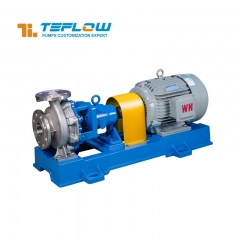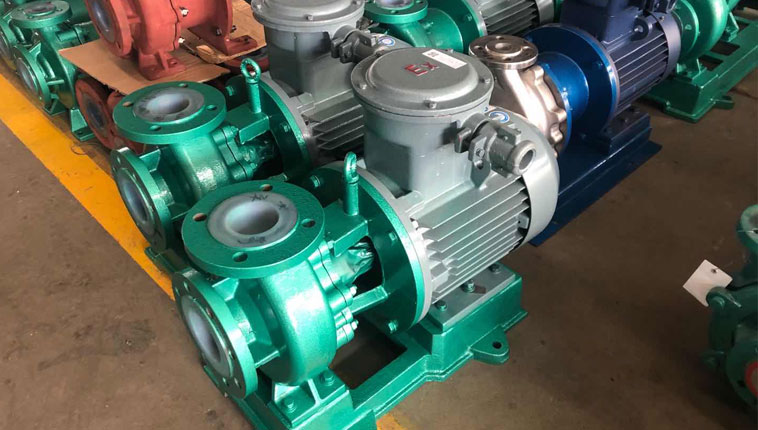In the fields of industry, agriculture and municipal engineering, vertical submersible pumps and submersible pumps are two common types of water pumps. Although they are both used to transport liquids, they have significant differences in structural design, working scenarios, installation methods and applicable environments. This article will analyze the differences between the two from multiple dimensions to help users choose the appropriate pump type more accurately.
1.Structural design
Vertical submersible pump
Structural features:The pump body of a vertical submersible pump is partially immersed in the liquid. The motor is usually installed above the liquid surface and connected to the impeller under the liquid through a long shaft. According to the different immersion depths, it can be divided into short-shaft type and long-shaft type.
Sealing method:Use mechanical seal or packing seal to prevent liquid from penetrating into the motor along the pump shaft.
Material selection:Because it is mostly used in corrosive media (such as acid and alkali liquids), the flow-through parts are often made of corrosion-resistant materials such as stainless steel, fluoroplastics or ceramics.
Submersible pump:
Structural features:The motor and pump body are designed as an integrated whole, and the whole is completely immersed in the liquid for operation. The motor is filled with oil or water, and is completely waterproof through double mechanical seals.
Sealing method:High-precision mechanical sealing system ensures long-term sealing of the motor in high-pressure liquid environment.
Material selection:The casing is mostly made of cast iron or stainless steel, and the impeller can be made of wear-resistant alloy or engineering plastic.
2.Working scenario and installation method
Vertical submersible pump:
Applicable scenarios:It is suitable for conveying liquids containing particles and corrosive liquids (such as chemical waste liquid and electroplating liquid) or working conditions that require partial immersion.
Installation method:The pump body is inserted vertically into the storage tank or pool, and the motor is located above the liquid level and requires support from a fixed bracket.
Advantages:The motor is not in contact with the liquid, reducing the risk of corrosion; the immersion depth can be adjusted to adapt to changes in the liquid level.
Submersible pump:
Applicable scenarios:It is mainly used in deep well water extraction, sewage discharge, rainwater pumping stations and other occasions that require complete immersion.
Installation method:The whole unit is submerged in the liquid and powered by cables, without the need for complex brackets.
Advantages:Compact structure, space saving; no suction range limitation, wide lift range (up to hundreds of meters).
3.Selection suggestions
When to choose a vertical submersible pump:
Transporting highly corrosive, high-temperature or solid particle-containing media;
The liquid level fluctuates frequently and the immersion depth needs to be adjusted flexibly;
The motor should be kept away from liquid environments (such as flammable and explosive places).
When to choose a submersible pump:
Deep well pumping, municipal drainage and other large flow requirements;
The installation space is limited and the piping design needs to be simplified;
Long-term continuous operation requires high sealing reliability.
4.Common Misunderstandings
Myth1:“Submersible pumps can be used as an alternative to vertical submersible pumps for corrosive liquids.”
Analysis:The corrosion resistance of submersible pumps depends on the material. If they are not specially customized, they may not be able to withstand strong acid and alkali environments.
Myth2:“The head of a vertical submersible pump must be lower than that of a submersible pump.”
Analysis:The head of a vertical submersible pump depends on the design. Long-axis multi-stage vertical submersible pumps can also achieve high-head delivery.
5.Summary
The core difference between vertical submersible pumps and submersible pumps lies in the structural sealing and applicable medium characteristics. With the advantages of external motor and corrosion resistance, vertical submersible pumps are more suitable for special working conditions such as chemical industry and metallurgy; while submersible pumps are the first choice in the field of deepwater extraction due to their high integration and convenient installation. The actual selection needs to be considered comprehensively in combination with the medium properties, operating environment and maintenance costs. If necessary, professional engineers can be consulted for customized design.





 +86 18130251359
+86 18130251359 teflowpumps@tlpumps.com
teflowpumps@tlpumps.com











 +86+0563-5093318
+86+0563-5093318
